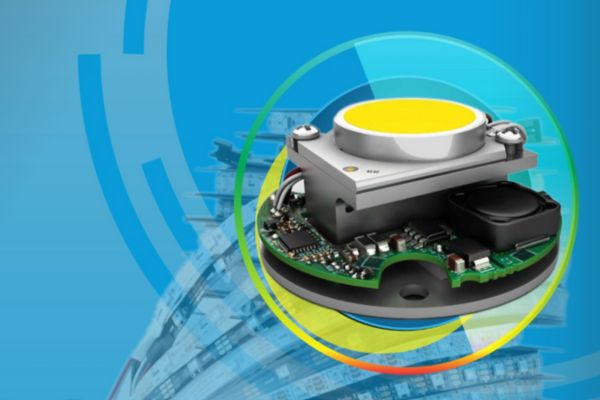
In a world where sustainability is more than a buzzword, LED lighting technology is illuminating the path to greener, smarter, and more efficient solutions. Driven by innovations in electronics design, the LED industry is evolving to meet global demands for eco-friendly and energy-efficient lighting across sectors. In this feature, we delve into how advancements in LED technology and complete electronics design are creating groundbreaking possibilities, addressing key industry challenges, and leading the future of sustainable lighting.
Rising to the Challenge: Energy Efficiency and Thermal Management
As the lighting industry pivots towards more sustainable practices, energy efficiency and thermal management in LED design remain core challenges. The shift to smaller, more powerful electronic devices has amplified power density, often resulting in increased heat generation that can degrade performance and shorten device lifespans.

Dr Ayesha Hakim of Somaiya Vidyavihar University explains, “The growing power density in smaller devices, including LEDs and processors, has intensified the need for effective thermal management solutions. Localized thermal hotspots are particularly problematic, as these high-heat areas can lead to failures if not controlled.”
The solutions to these challenges are evolving rapidly, with innovations such as high-thermal-conductivity materials like copper and aluminum that enhance heat dissipation. Thermal Interface Materials (TIMs) have also become essential in managing heat transmission, supporting the longevity and efficiency of LED devices. This evolution is crucial not only for maintaining LED performance but also for ensuring safety and reliability in compact, high-power applications.
Eco-Friendly Demand and LED Innovations
The push for sustainability is reshaping LED technology in unexpected ways, from increasing energy efficiency and reducing hazardous materials to developing smarter designs.

Prof. Amrita Naiksatam, also of Somaiya Vidyavihar University, notes that this eco-conscious trend is driving LED lighting firms to explore the untapped potential of solar-powered LEDs, creating sustainable solutions for off-grid regions that reduce carbon footprints. Solar-powered LED systems are a promising innovation in the lighting industry, bringing renewable energy to both urban and rural areas, cutting carbon emissions, and delivering sustainable lighting solutions where they are needed most.
Eco-friendly demands have also fueled the shift toward using recyclable materials in LED manufacturing. This practice not only mitigates environmental impact but also aligns with a growing consumer base prioritizing sustainable options. The result is a rapidly transforming industry where reducing waste, conserving energy, and promoting long-term environmental responsibility are becoming the norm rather than the exception.
Technological Trends Paving the Way for Sustainable Illumination
1. Human-Centric Lighting (HCL)
Human-Centric Lighting (HCL) is gaining popularity due to its potential benefits for energy savings and human health. By adapting light intensity and color to support human circadian rhythms, HCL has shown promise in enhancing well-being in various settings. This trend is not only revolutionizing lighting in residential spaces but is also making waves in commercial and industrial environments where worker productivity and health are critical.
2. AI-Powered Smart Lighting Systems
Artificial intelligence (AI) is another game-changer in the LED landscape. AI-powered lighting systems can “learn” user patterns, optimizing lighting based on factors such as occupancy, time of day, and ambient light levels. These smart systems save energy while ensuring a comfortable environment, providing real-time adjustments without compromising user comfort. Leveraging machine learning algorithms, these systems are redefining energy management by enabling lighting solutions that intelligently adapt to their surroundings.
3. Micro-LED Technology
Micro-LEDs are emerging as a transformative force, offering high brightness and color accuracy with lower power consumption than traditional LEDs. This technology holds vast potential across industries—from automotive lighting to display technology in wearables and augmented reality (AR) devices. Micro-LEDs combine the best of both LED and OLED technologies, providing superior visual quality without the high power demands, making them a frontrunner for sustainable lighting and display applications.
Smart Lighting Systems and the Internet of Things (IoT)
The Internet of Things (IoT) has had a profound impact on lighting, especially as IoT-driven smart lighting systems become more prevalent. These systems allow users to automate lighting based on occupancy, daylight availability, and even personal preferences. Through IoT integration, lighting fixtures can communicate seamlessly with devices like voice assistants, smartphones, and home automation systems. This connectivity not only enables energy-efficient lighting but also creates systems that are more resilient and responsive to maintenance needs.
“Smart lighting is revolutionizing the industry,” says Prof. Amrita Naiksatam. “Electronics design firms are now incorporating power optimization algorithms and self-regulating systems that minimize energy waste in real-time.” This shift toward intelligent, adaptive lighting design is a testament to the synergy between electronics and lighting, underscoring the role of comprehensive electronics design in pushing LED lighting to new heights.
The Role of Comprehensive Electronics Design in LED Advancements
Companies specializing in electronics design are at the forefront of this shift, developing the next generation of sustainable lighting solutions. By focusing on energy efficiency, smarter systems, and robust design, these firms are helping shape a greener future for LED lighting. Here are some notable advancements that underscore the role of comprehensive design in sustainable LED technology:
-
Driverless LEDs: Driverless LED technology has emerged as an innovation that removes the need for traditional power drivers, reducing power consumption and extending the lifespan of LED systems. This design innovation simplifies the circuitry, reduces heat production, and enhances the durability of LED solutions across various applications.
-
Quantum Dot LEDs (QLEDs): QLED technology, commonly used in displays, enhances brightness and color fidelity with lower power requirements. Quantum dots are now being explored beyond display screens, offering a more efficient solution for lighting that requires less power while delivering high-quality output.
-
Organic LEDs (OLEDs): OLEDs are gaining popularity due to their energy-saving potential and ability to emit light without a backlight. In addition to their energy-efficient profile, OLEDs are increasingly being used in design-focused lighting, where their flexibility and color range enable innovative architectural and artistic applications.
These advancements are creating new possibilities, allowing LED technology to expand into markets that prioritize sustainability, efficiency, and innovation.
Challenges and Opportunities in Energy Efficiency and Thermal Management
Although LED technology has made significant strides in energy efficiency, the industry still faces challenges in managing the heat generated by increasingly powerful devices. The thermal management of compact LED systems, such as those used in automotive and microelectronic applications, demands advanced materials and design approaches to prevent overheating.
For example, LEDs in small spaces benefit greatly from improved heat sink designs and TIMs, which facilitate better heat dissipation. Furthermore, using materials like copper and aluminum, known for their high thermal conductivity, enables efficient heat management, which is essential for extending device longevity and maintaining performance standards.
Future Trends in LED Lighting and Electronics Design
As LED technology advances, several key trends and technologies are expected to shape the future of sustainable lighting:
-
Sustainable Manufacturing: Emphasis on eco-friendly production techniques is gaining traction. LED lighting firms are increasingly adopting sustainable manufacturing practices that use low-impact materials and energy-efficient methods, responding to consumer demands for environmentally responsible products.
-
Renewable Energy Integration: The integration of renewable energy sources, such as solar, is another trend shaping the future of LED lighting. Solar-powered LEDs provide a sustainable alternative, particularly in off-grid applications, and contribute to reducing overall energy consumption.
-
Circular Economy in Lighting: The adoption of circular economy principles, such as recycling and repurposing materials, is becoming a priority for companies aiming to minimize environmental impact. By embracing recyclability in LED design, manufacturers are taking steps toward a more sustainable lighting industry.
Conclusion
The LED lighting industry is paving the way for a future where energy efficiency and environmental responsibility coexist. As companies specializing in electronics design continue to innovate, the possibilities for sustainable lighting are expanding across sectors, from residential and commercial to automotive and industrial applications. The commitment to smarter, eco-friendly, and energy-efficient lighting is not just transforming the way we light our spaces—it is setting a new standard for sustainability in technology.
The future of LED lighting will undoubtedly be shaped by technological advancements, market demand for greener solutions, and the ingenuity of electronics designers pushing the boundaries of what’s possible. By meeting the challenges of thermal management, integrating smart systems, and embracing sustainable practices, LED technology is illuminating a path to a greener, more efficient, and ultimately more sustainable world.
TrendForce 2024 Global LED Lighting Market Analysis
Release Date: 01 February 2024 / 31 July 2024
Language: Traditional Chinese / English
Format: PDF and Excel
Page: 90-100 / Semi-Annual
|
If you would like to know more details , please contact:
|














